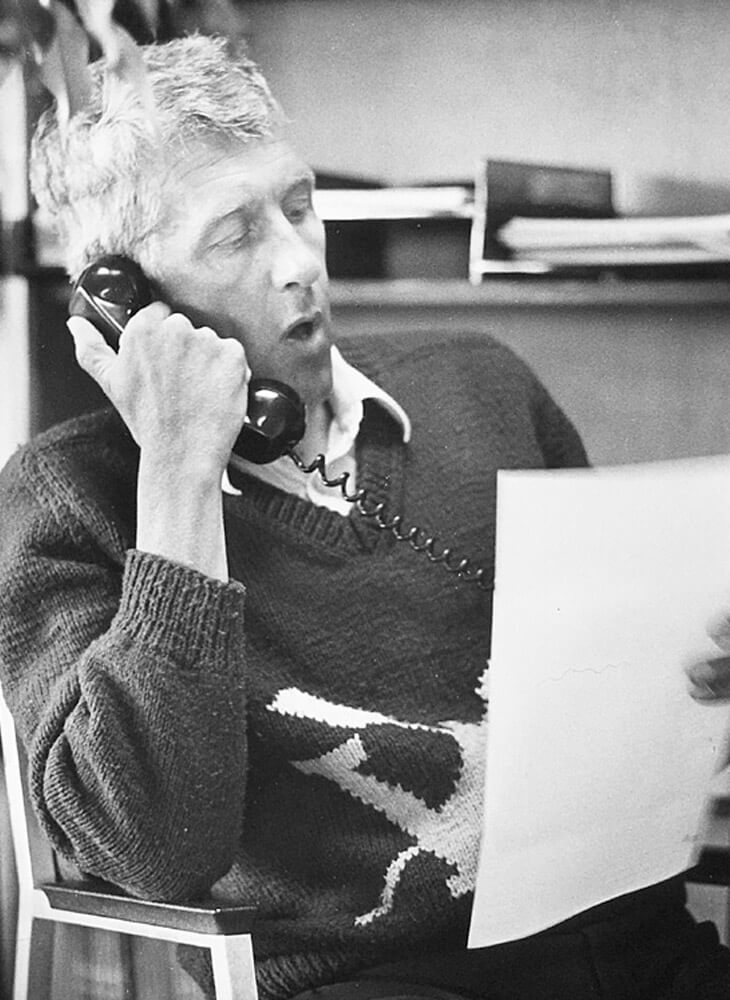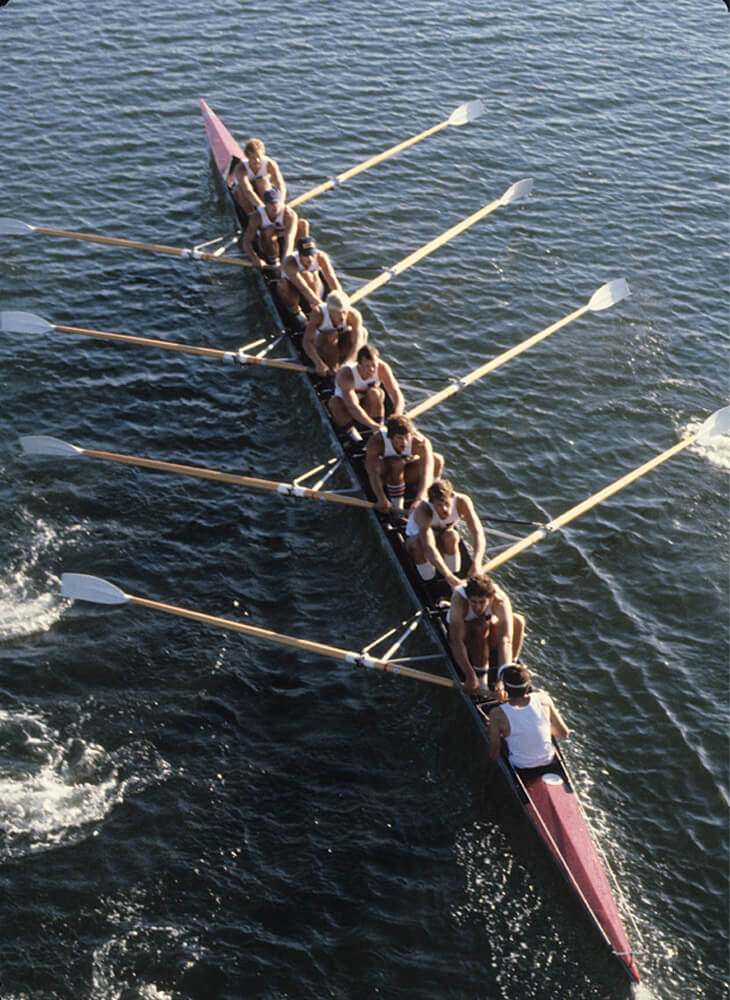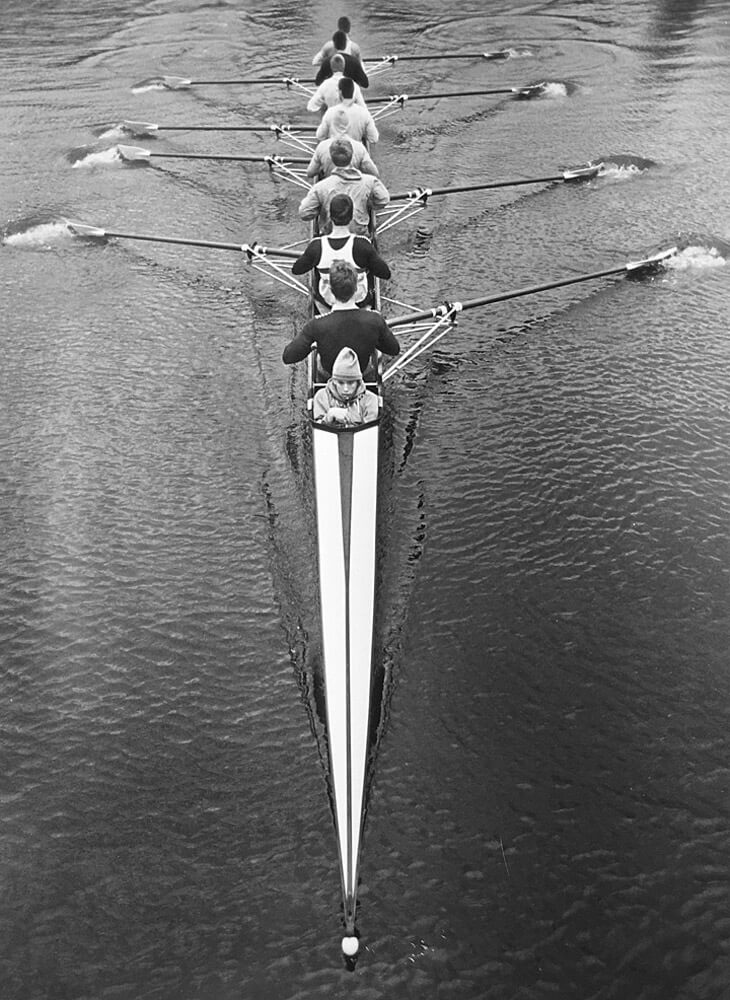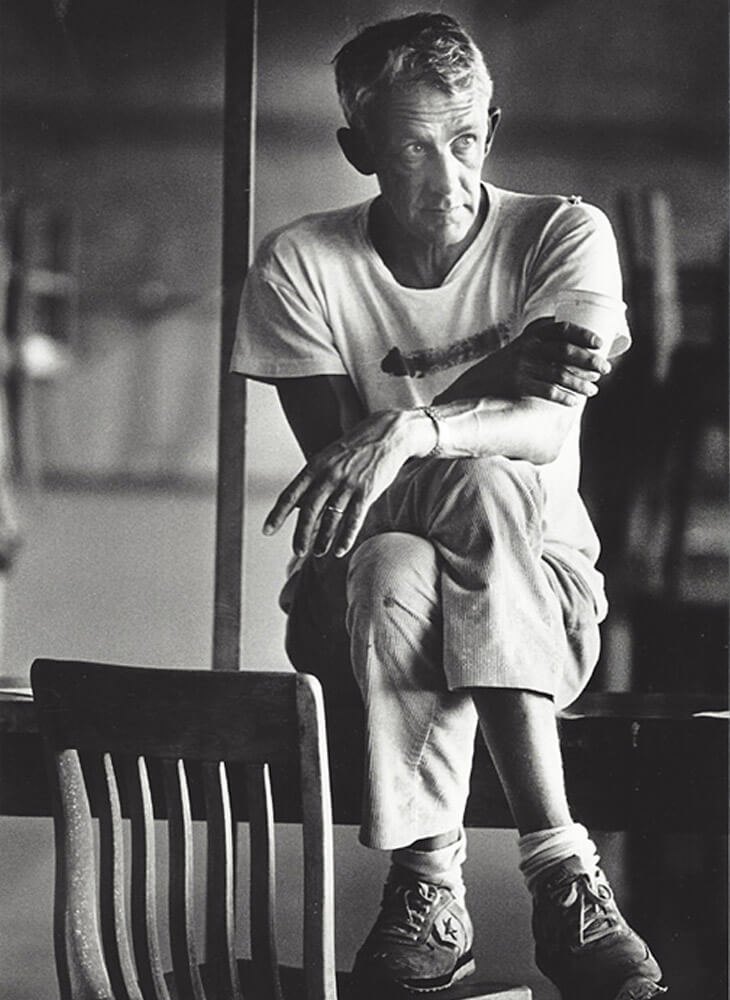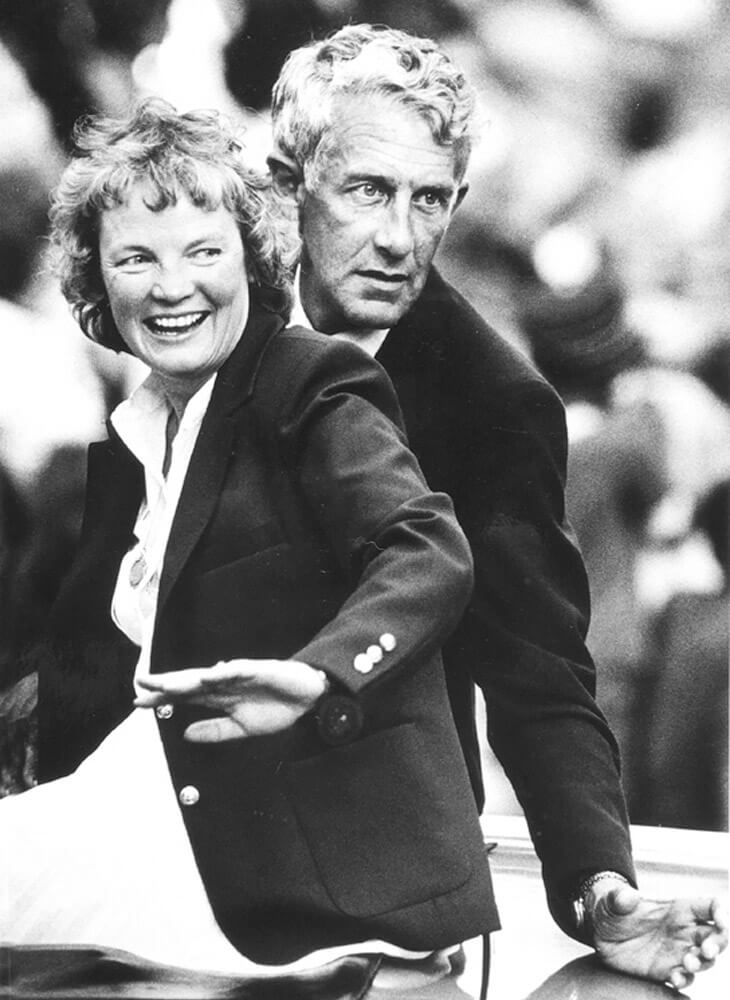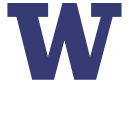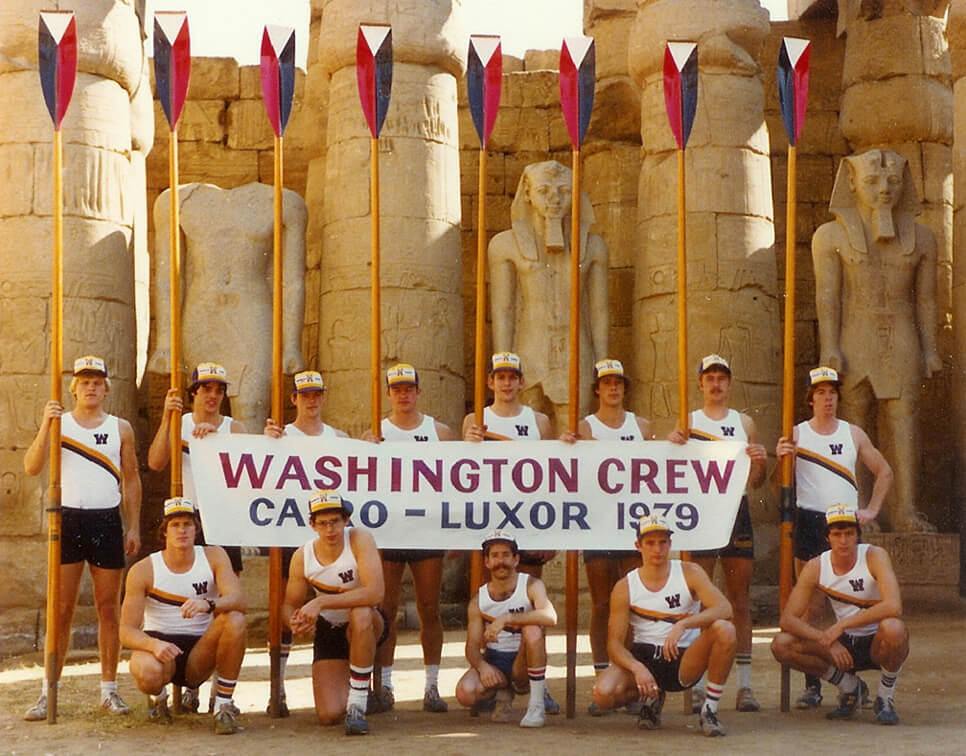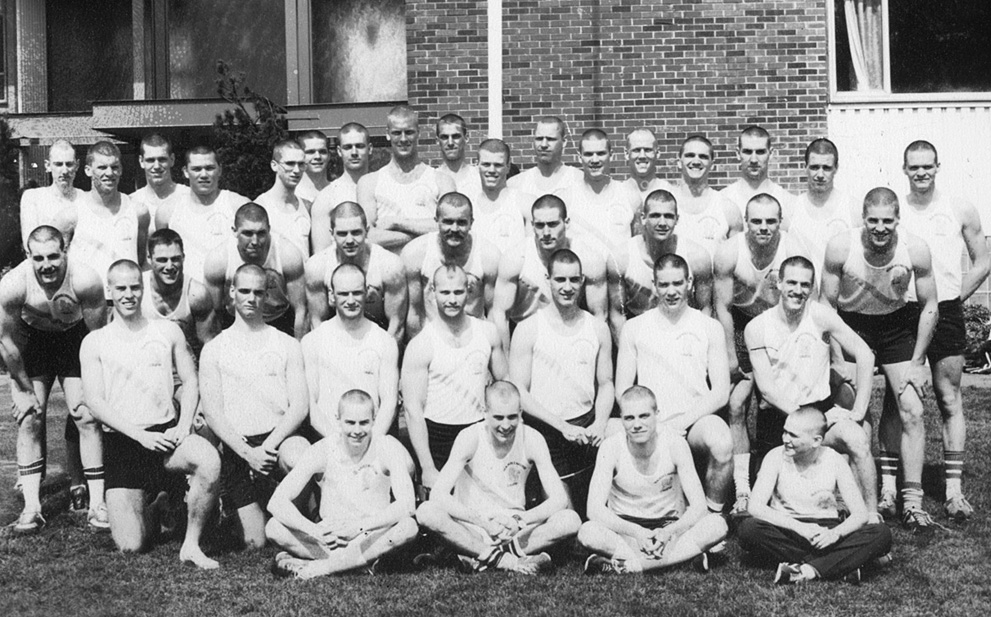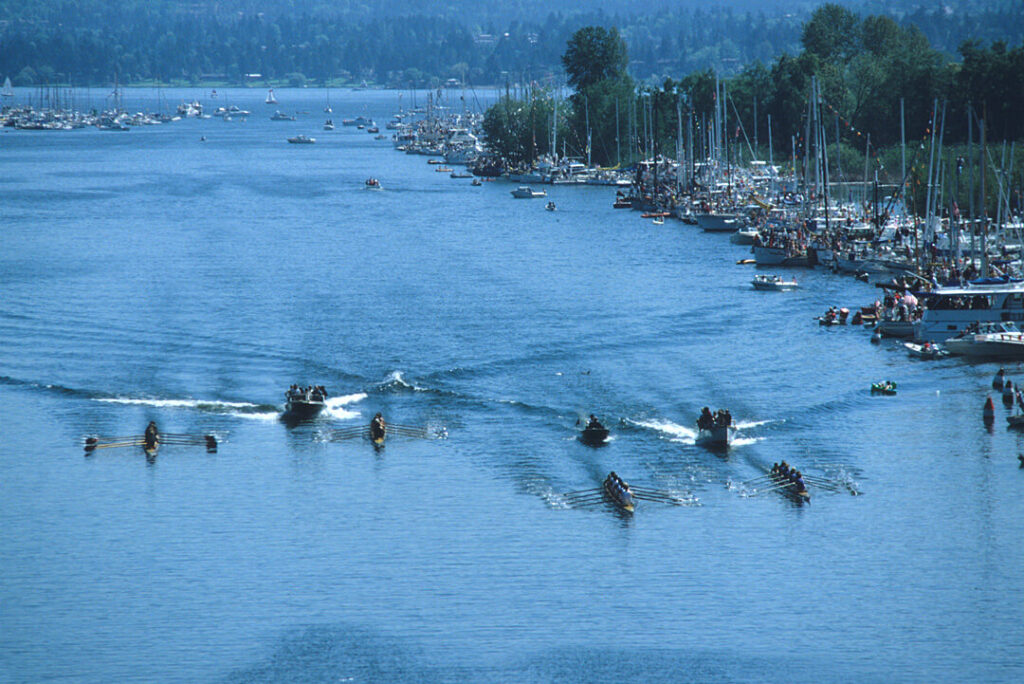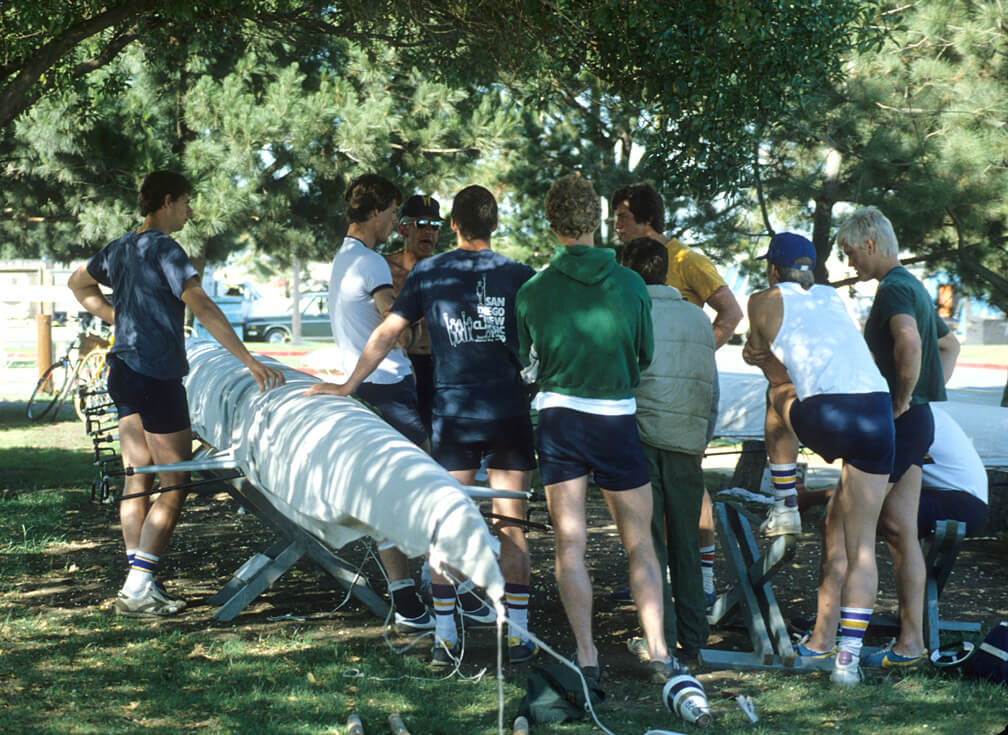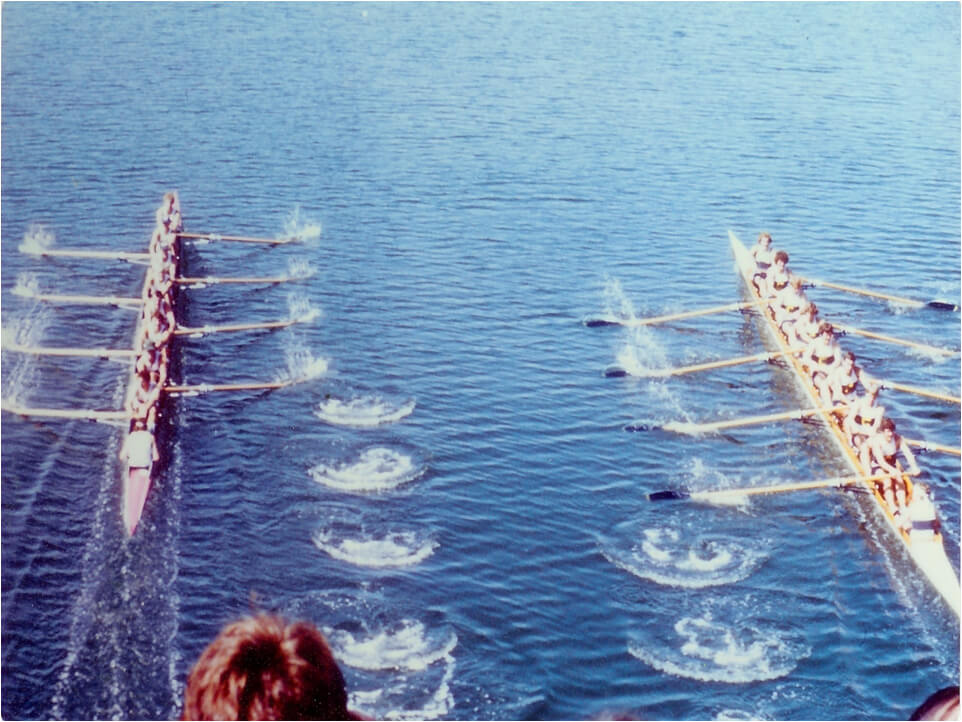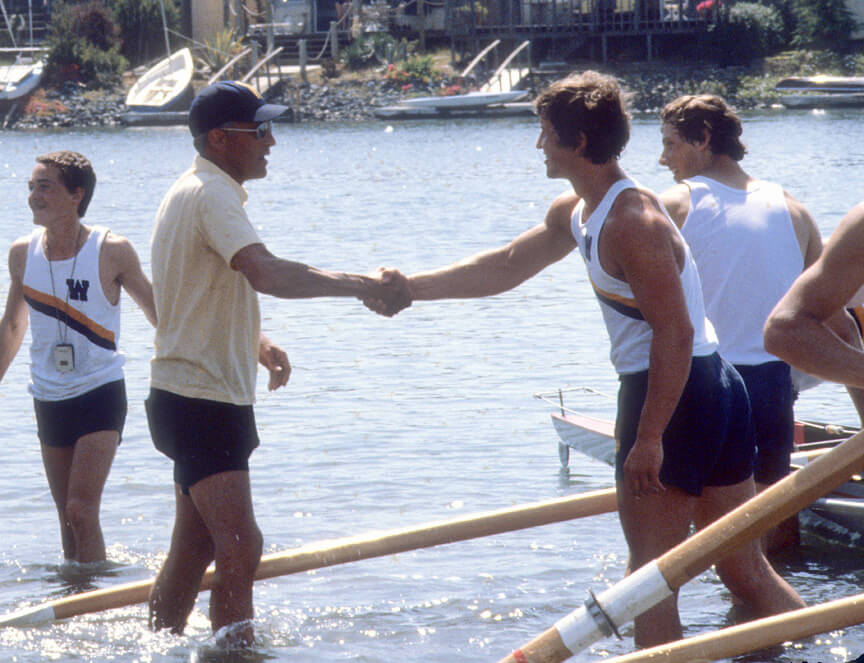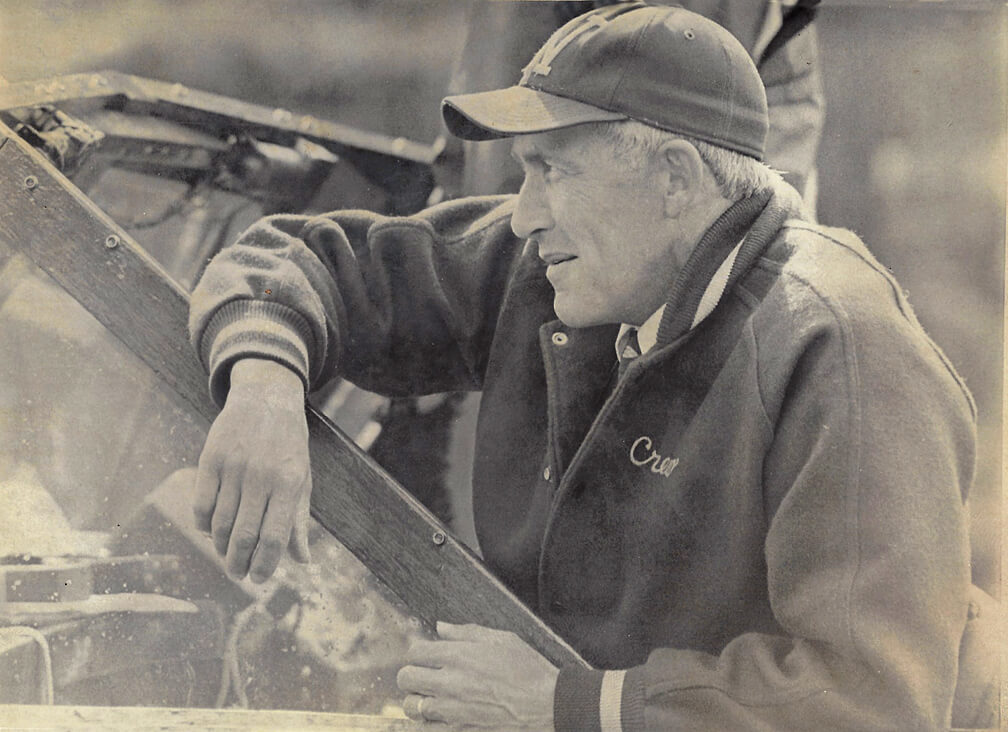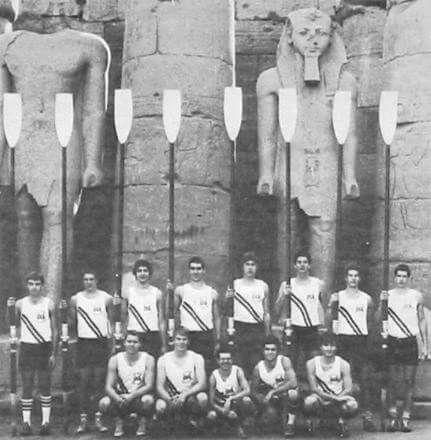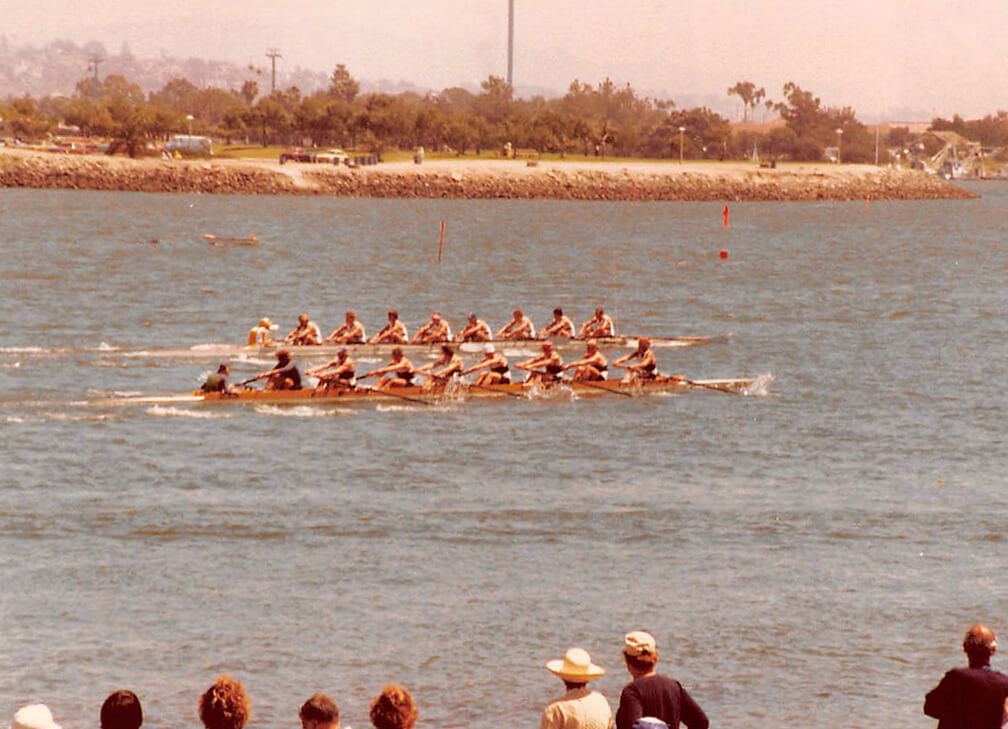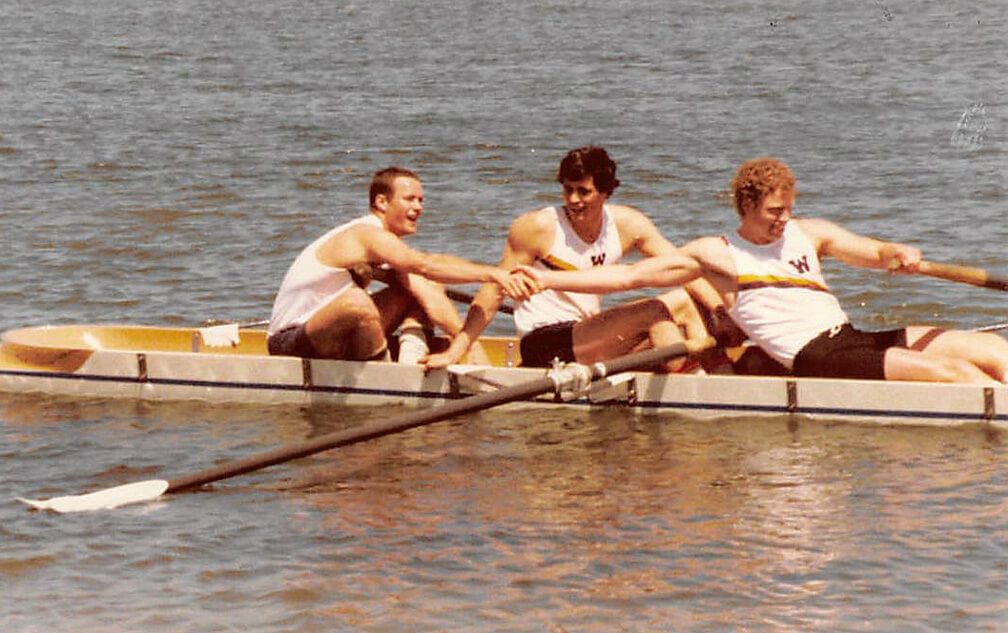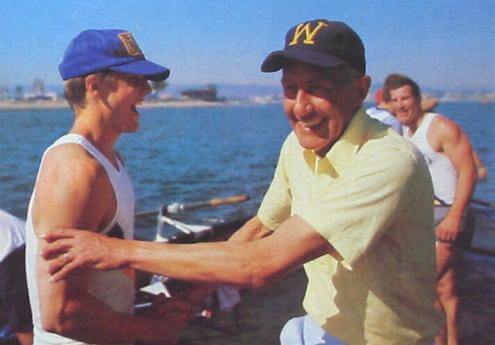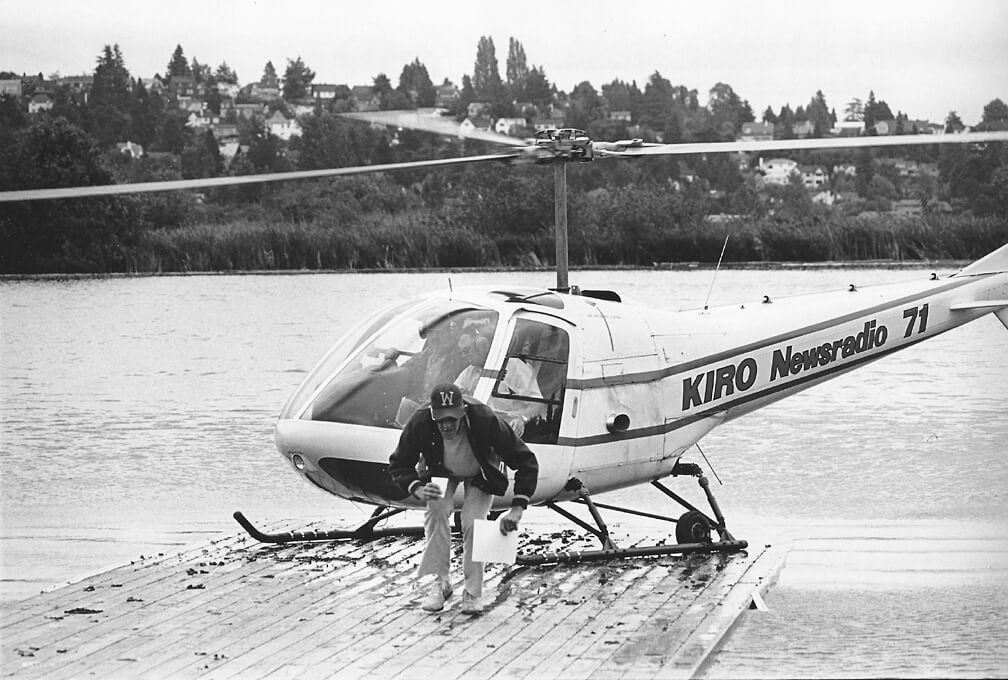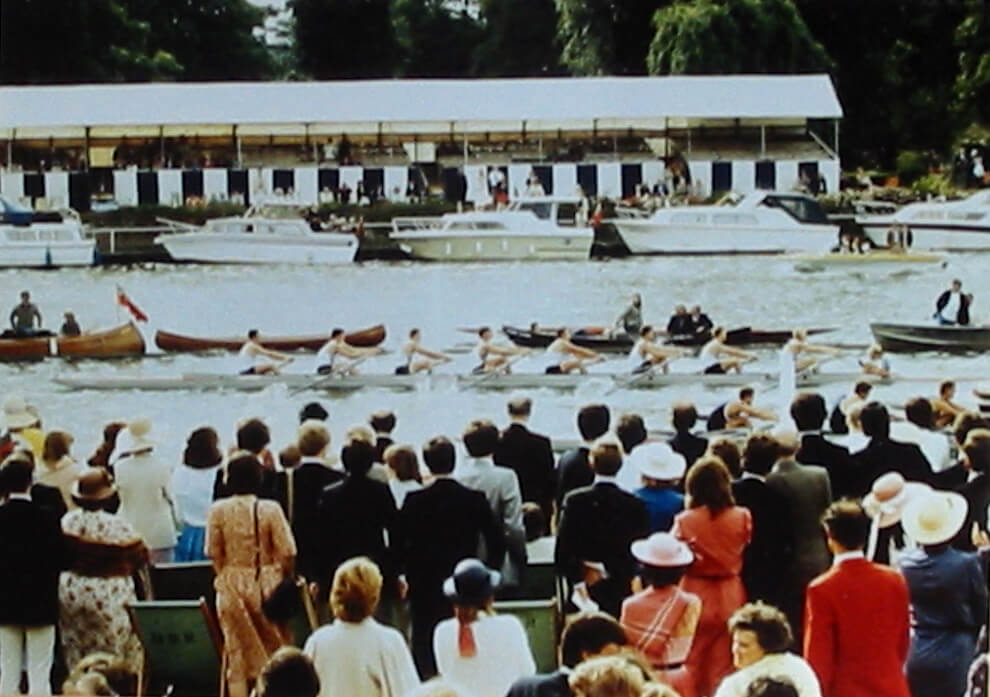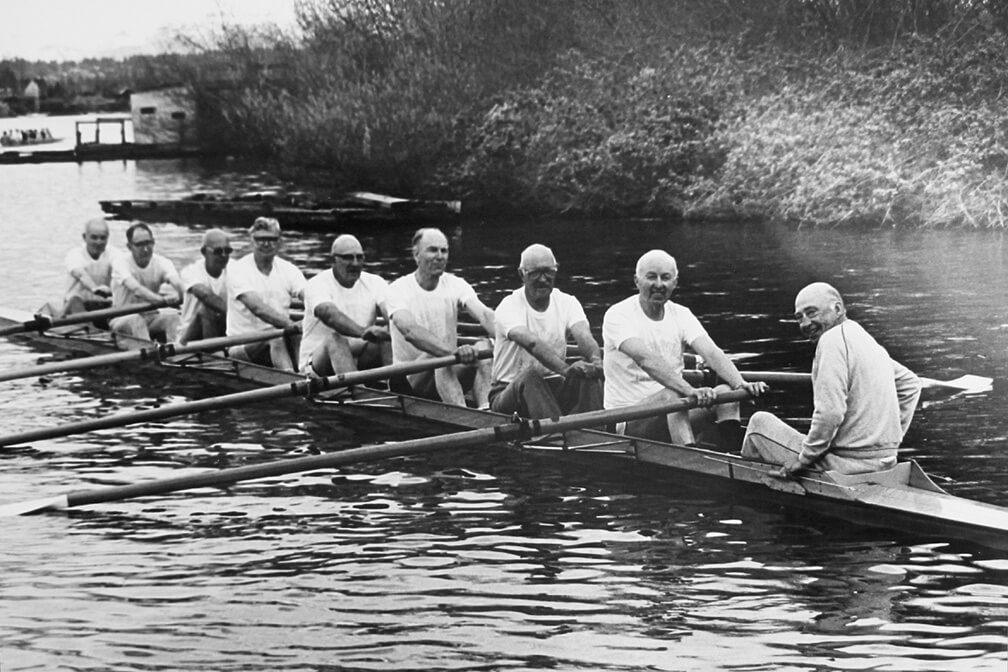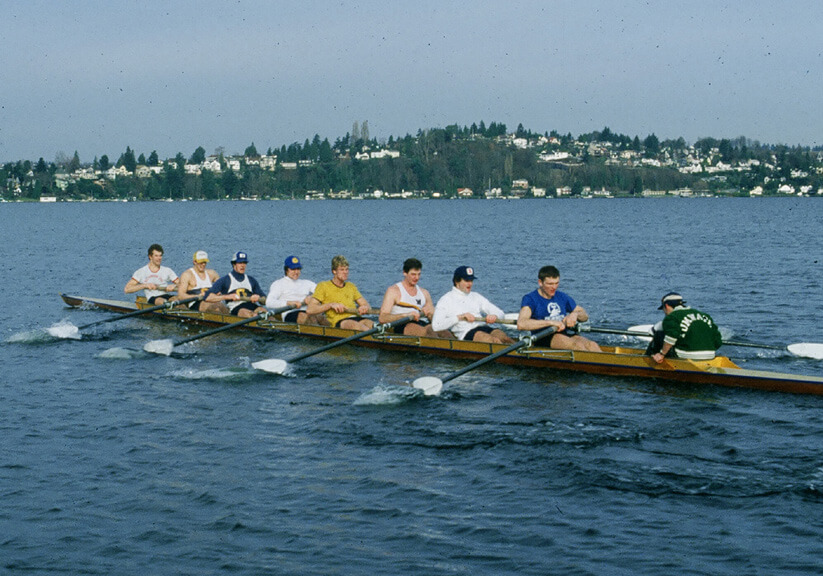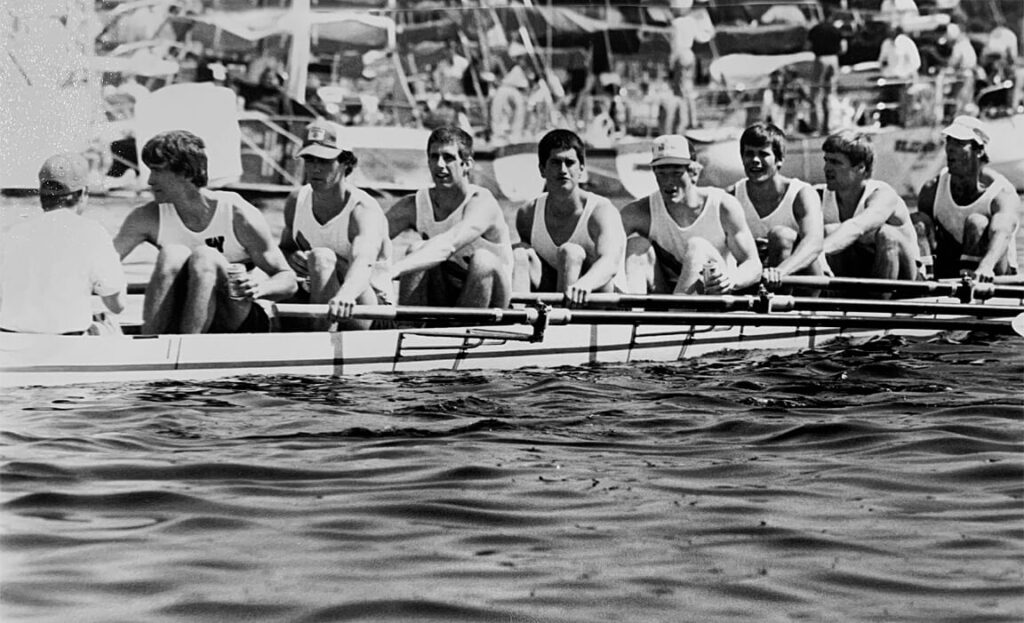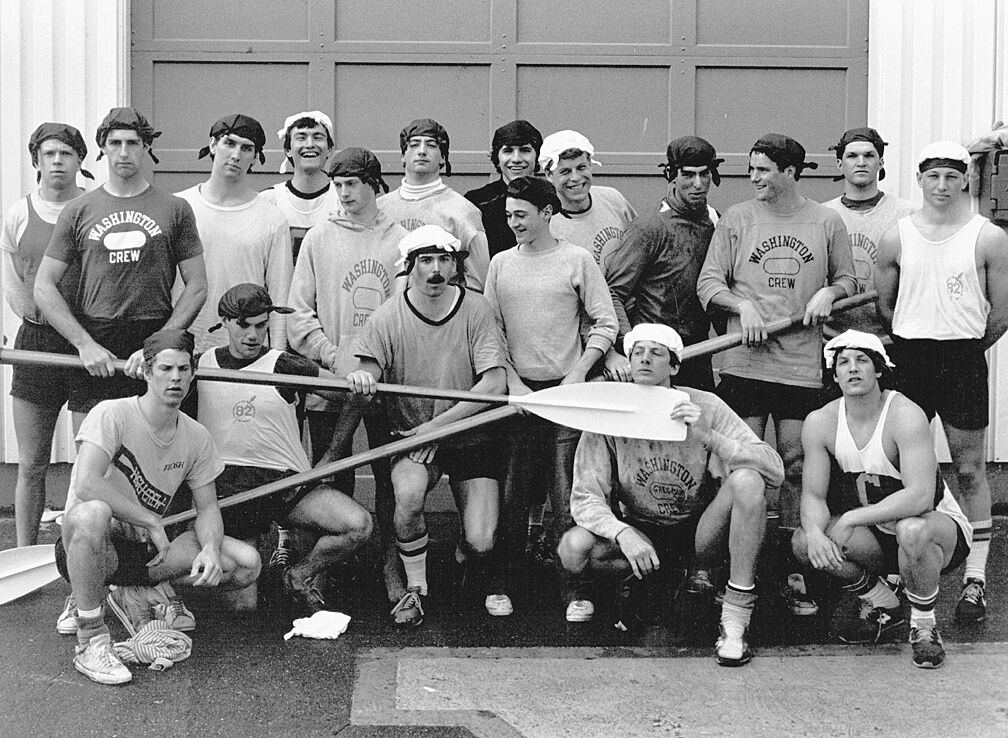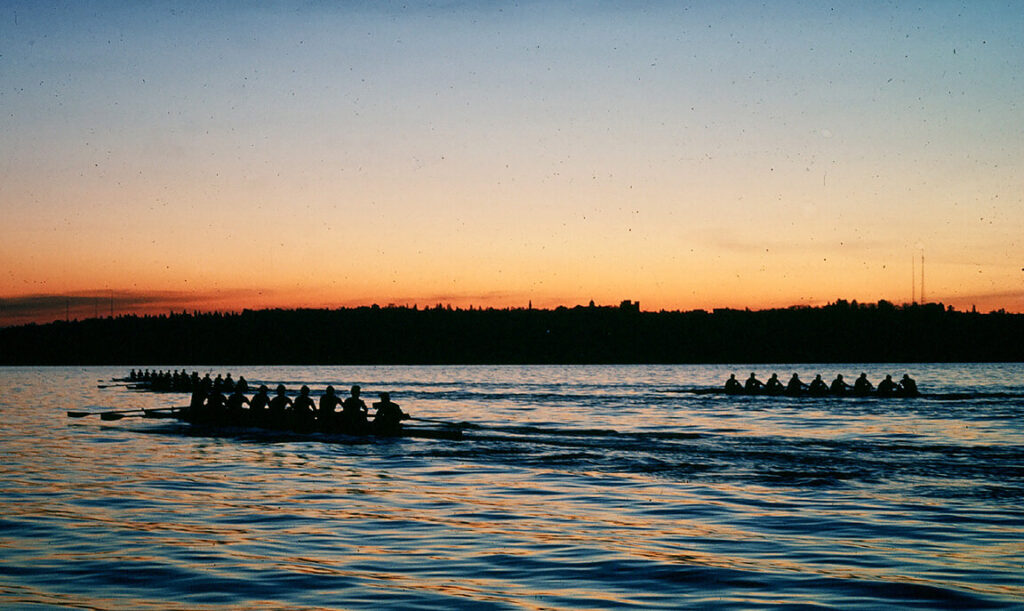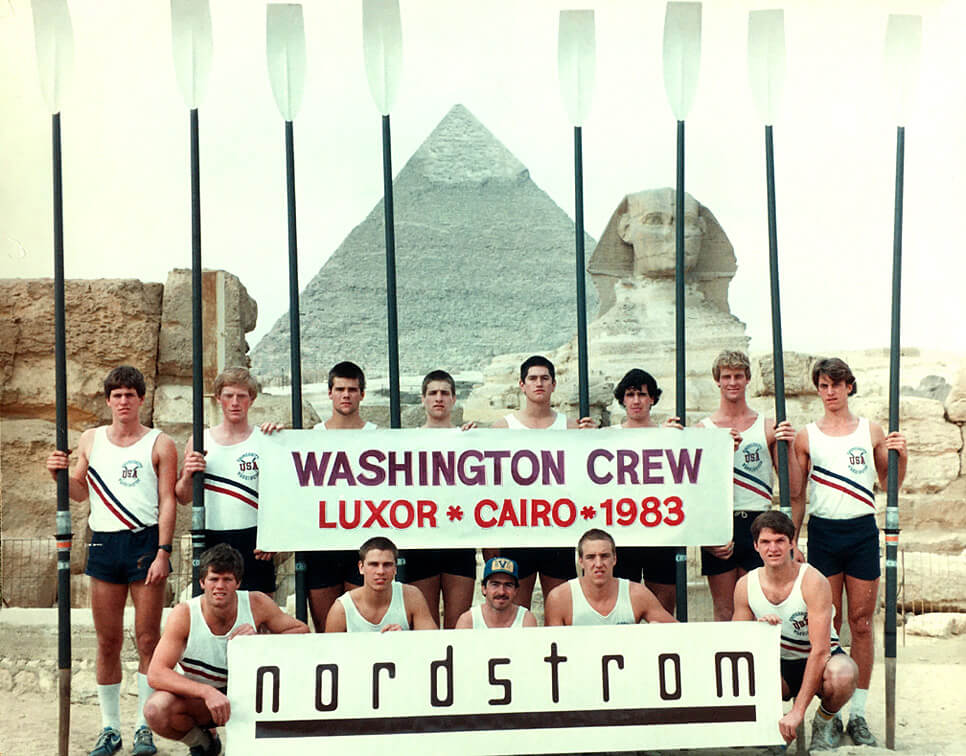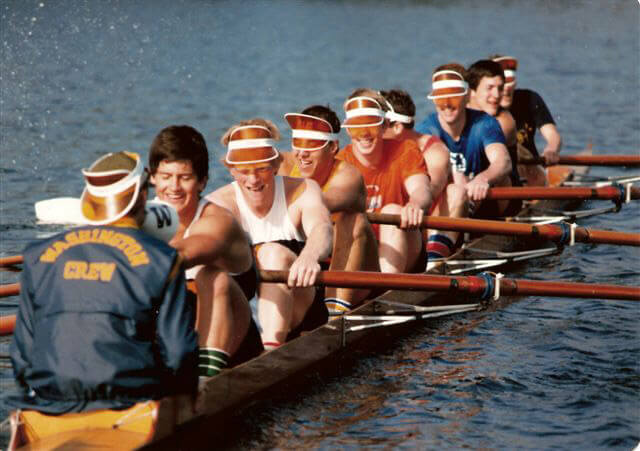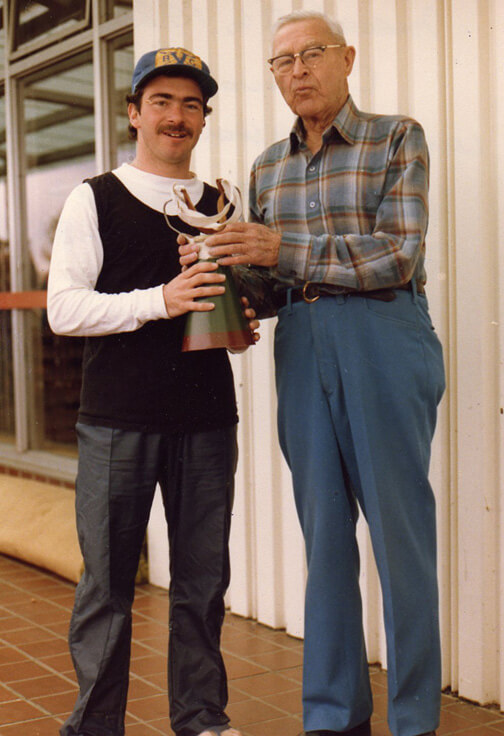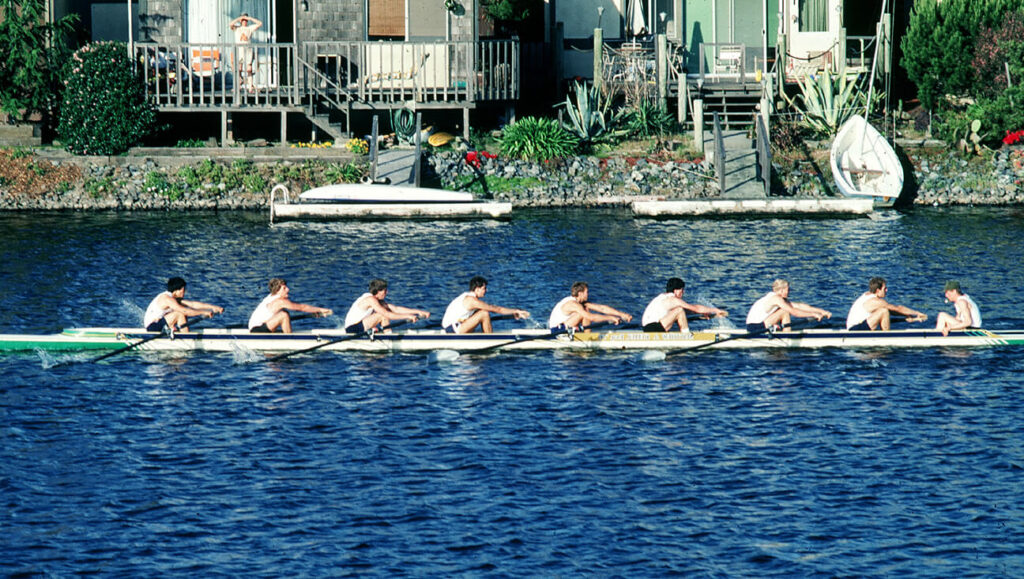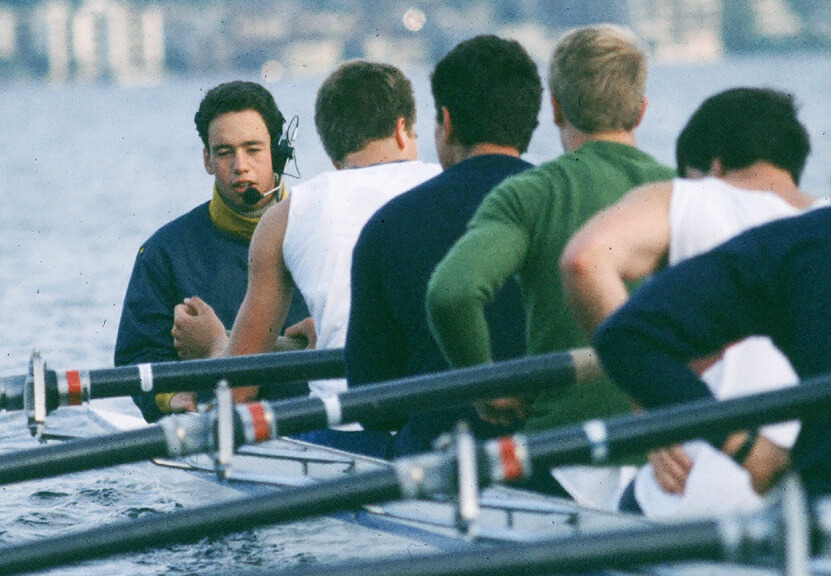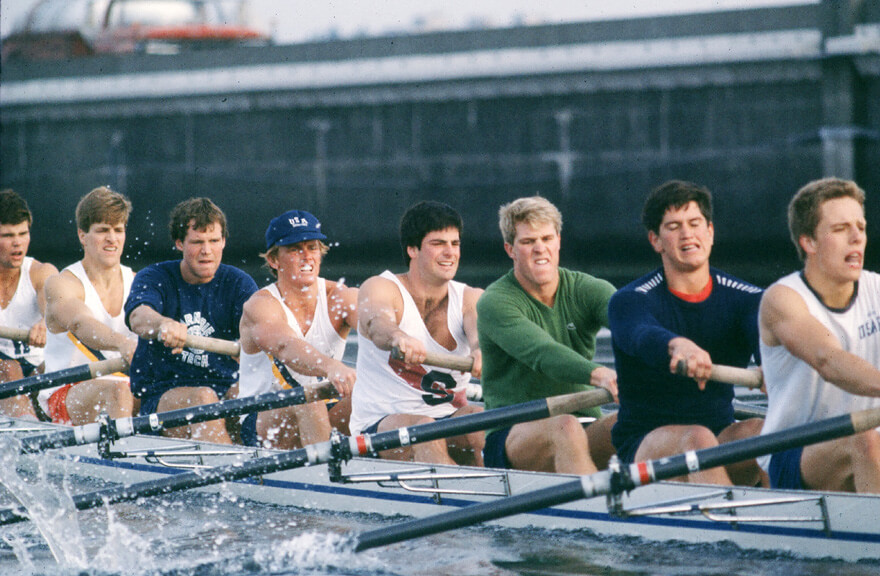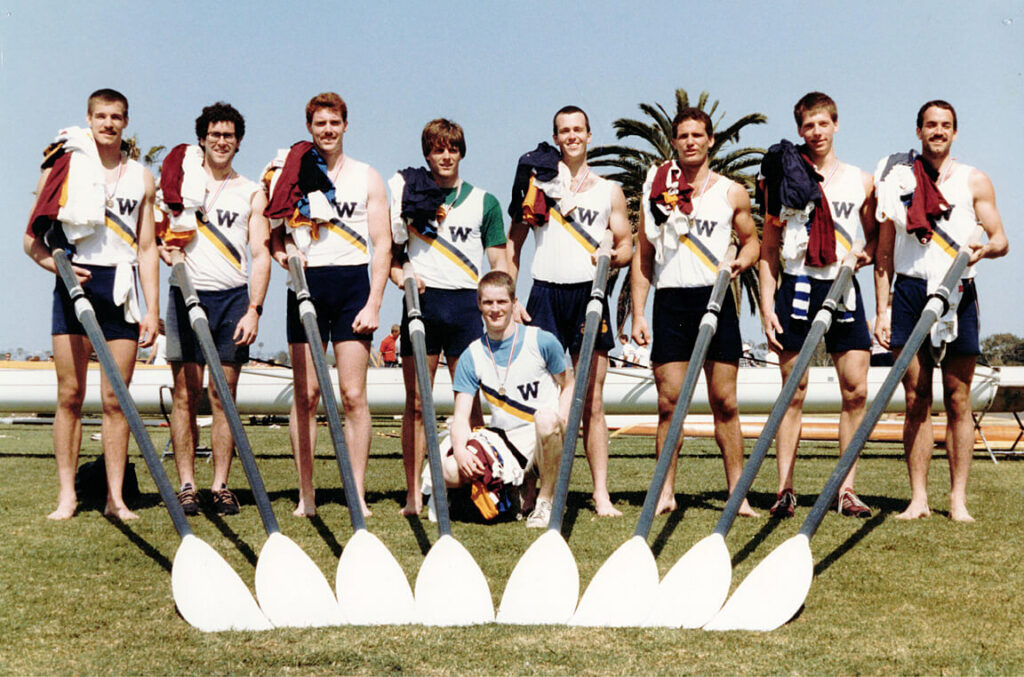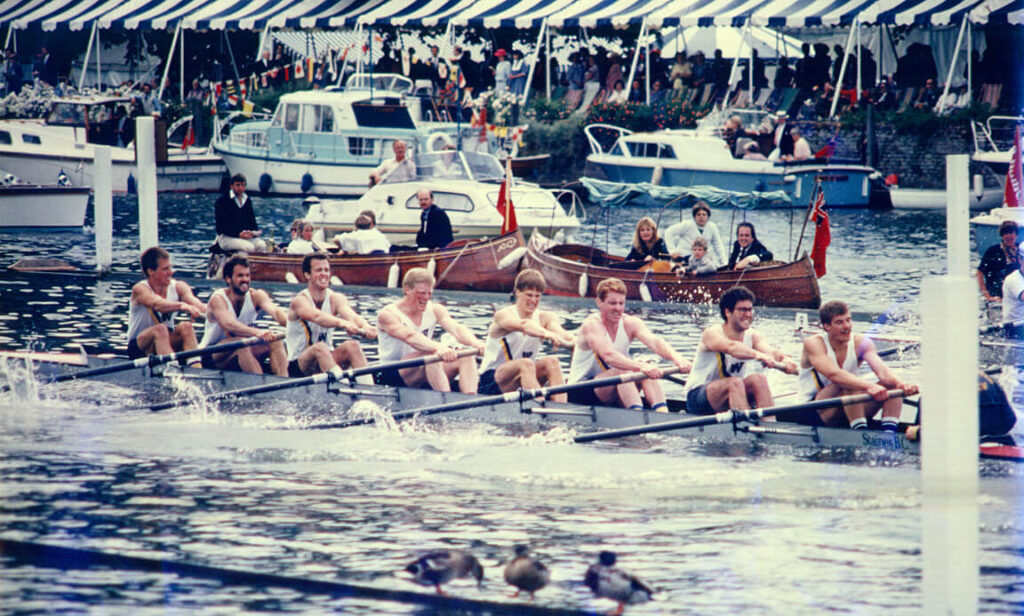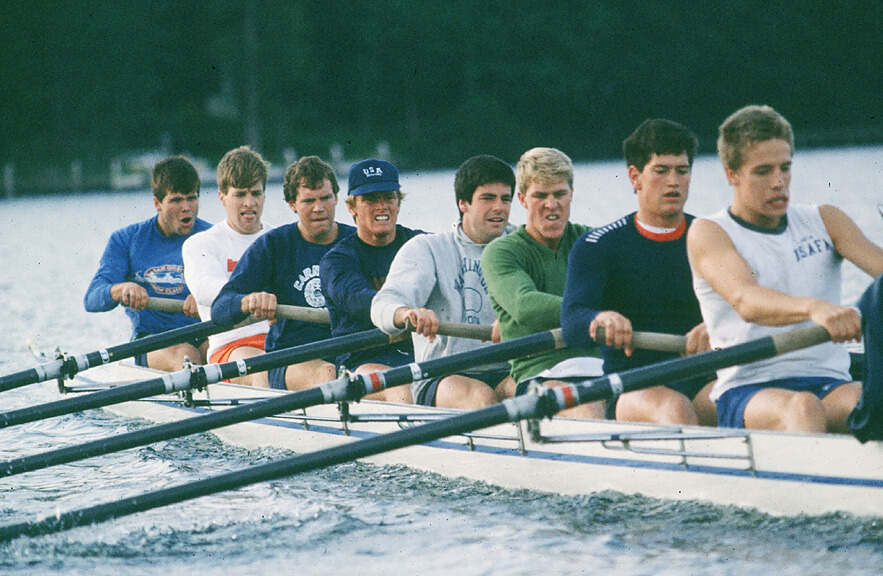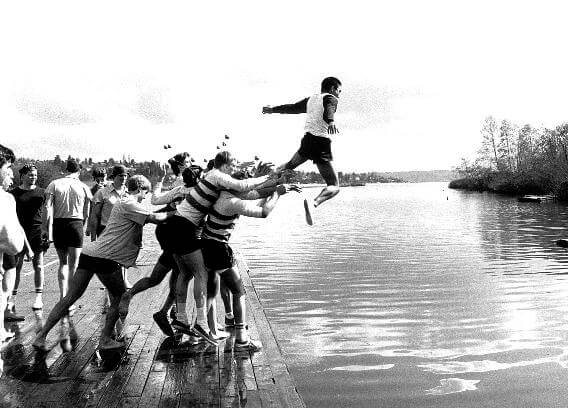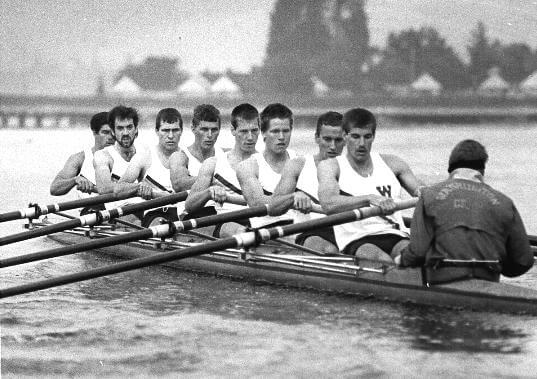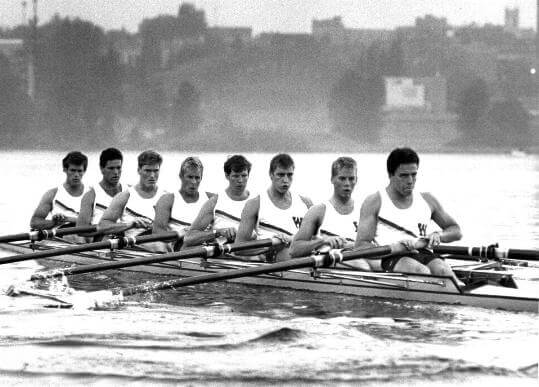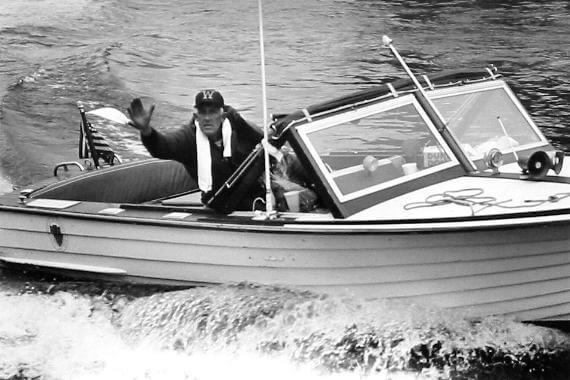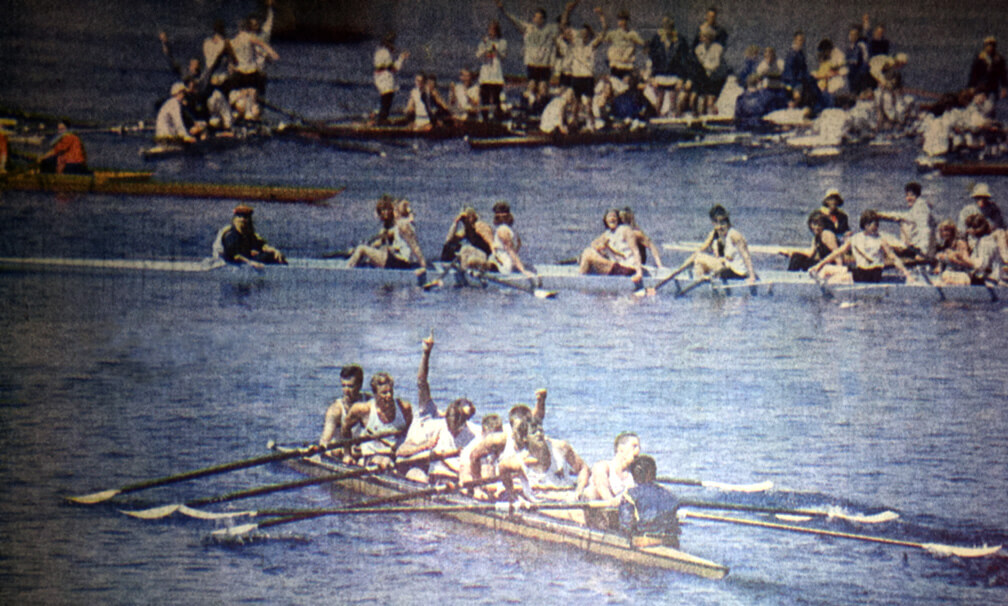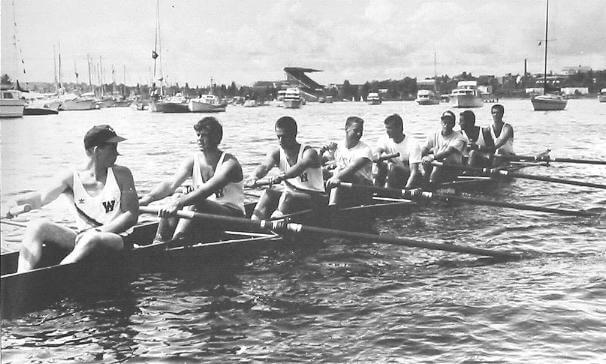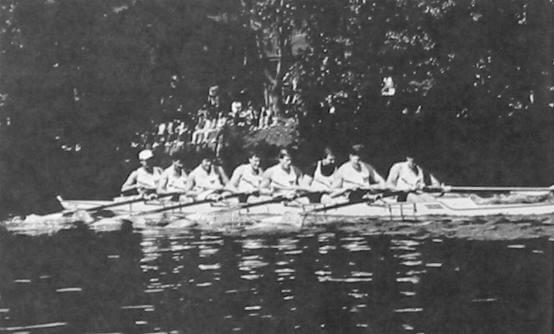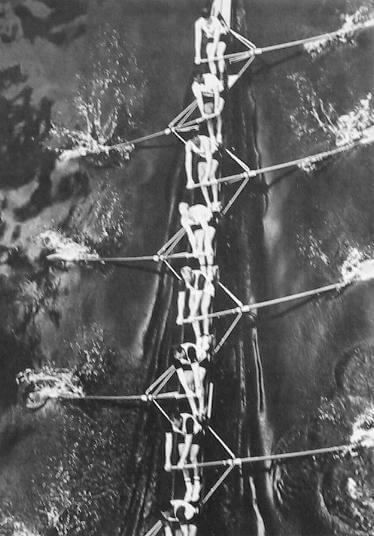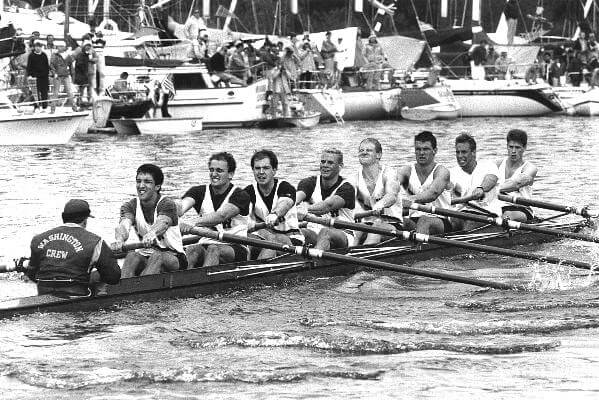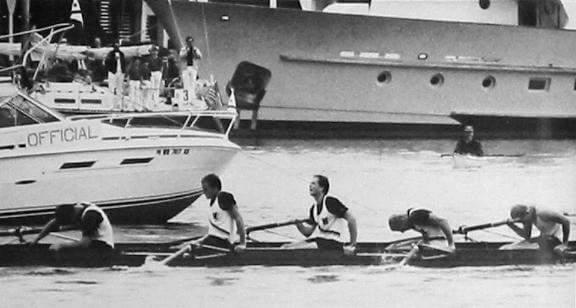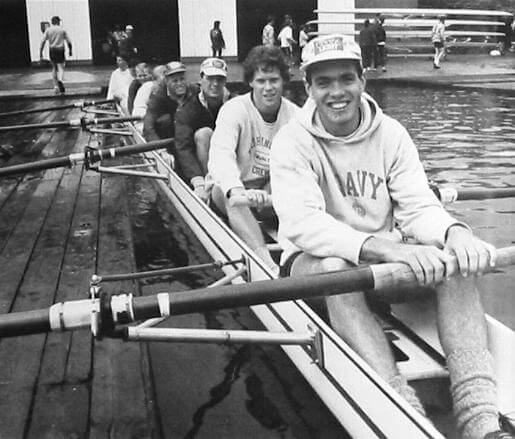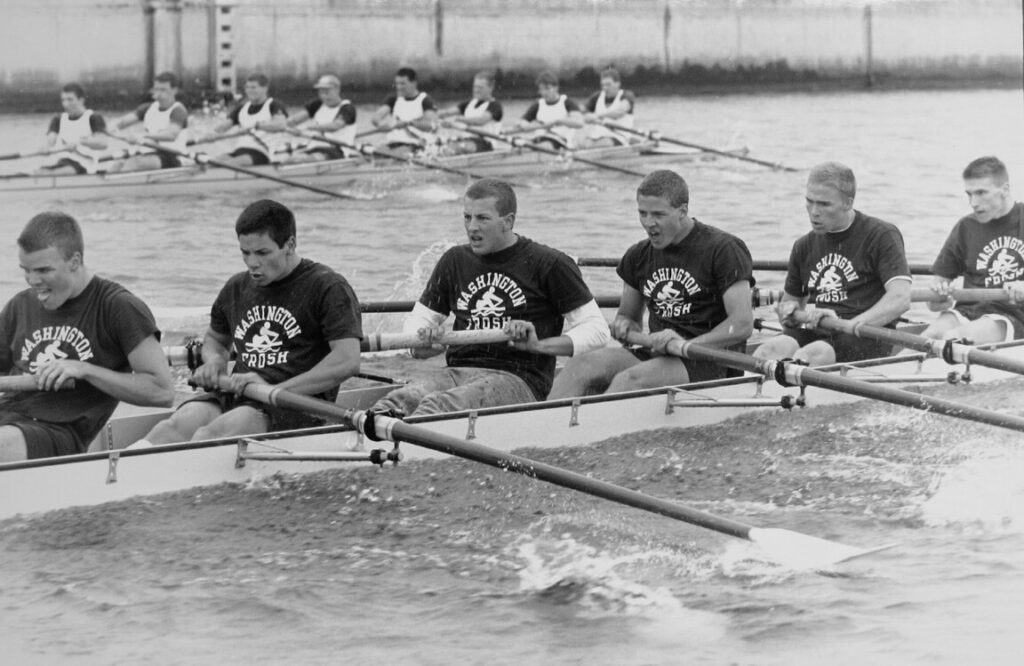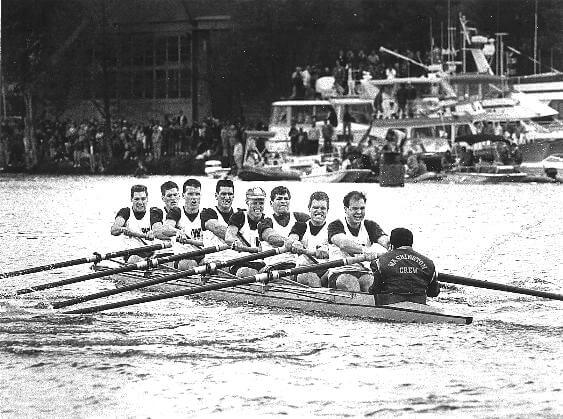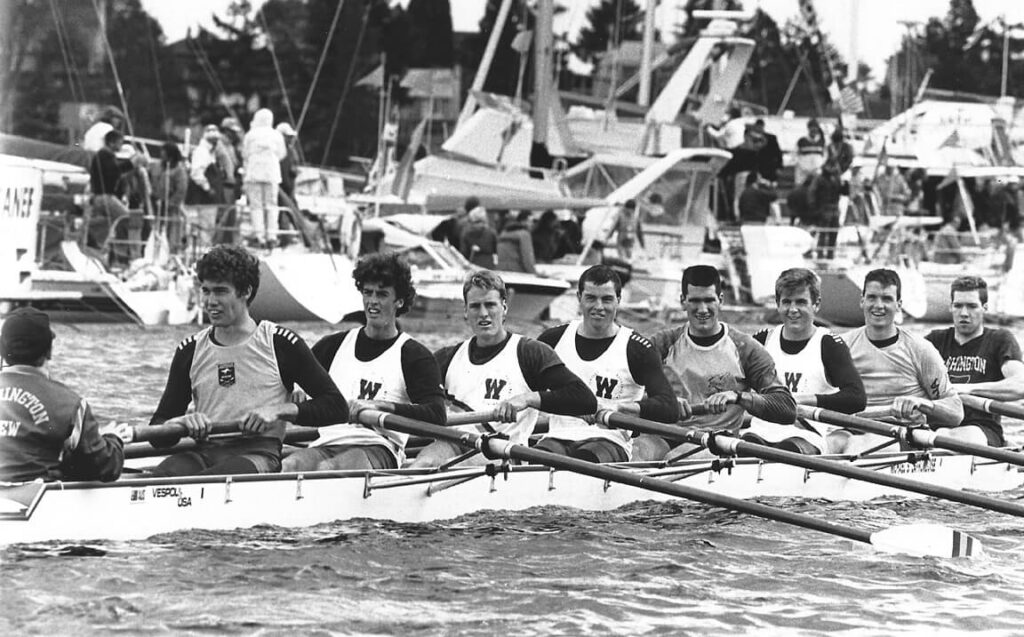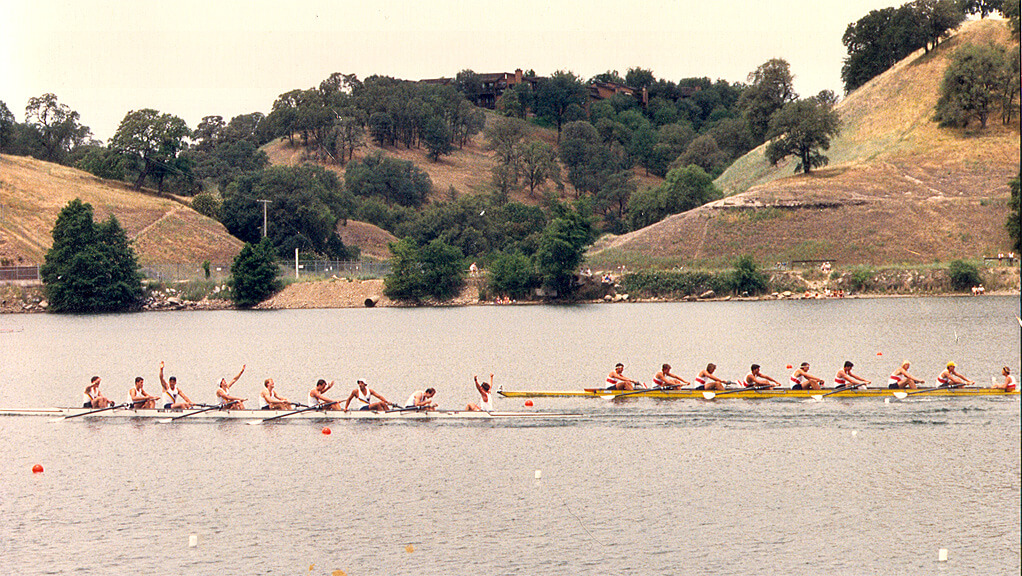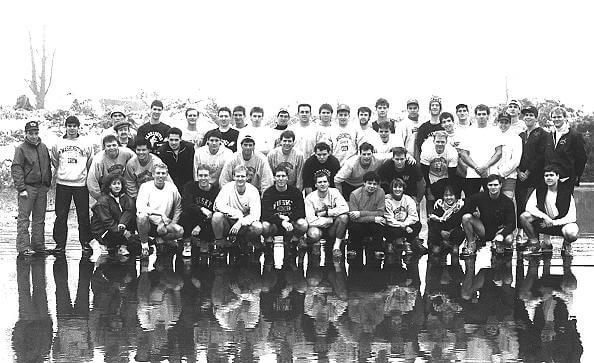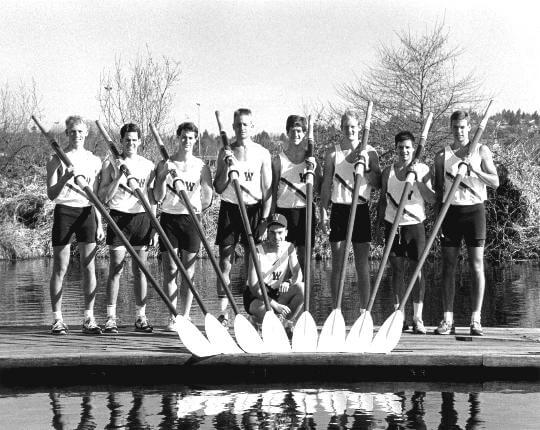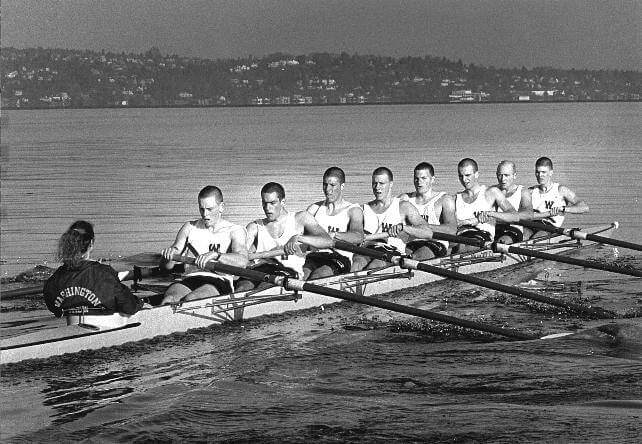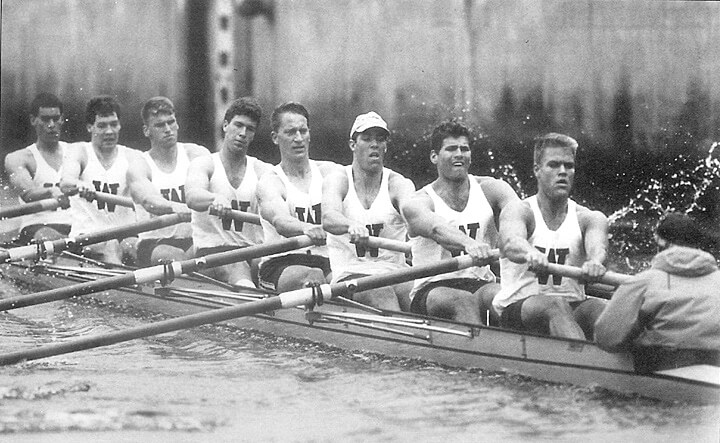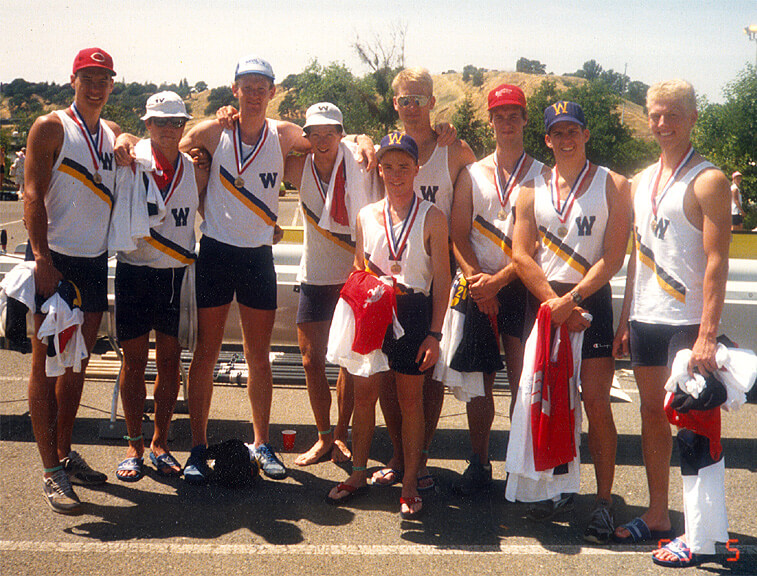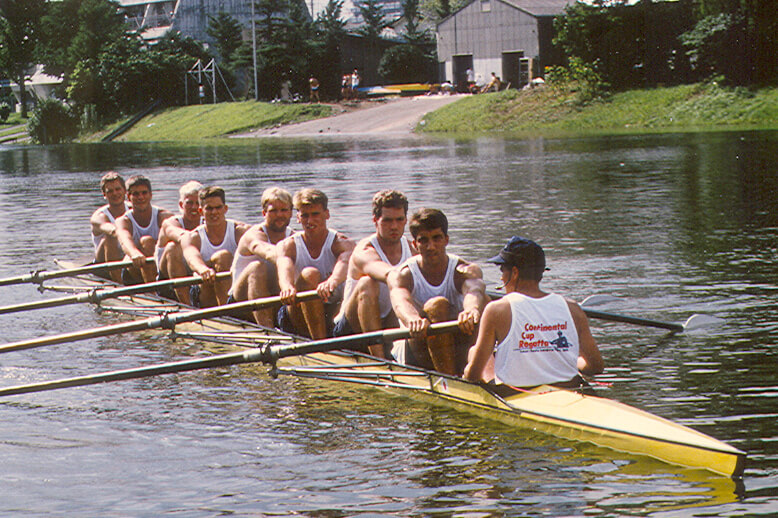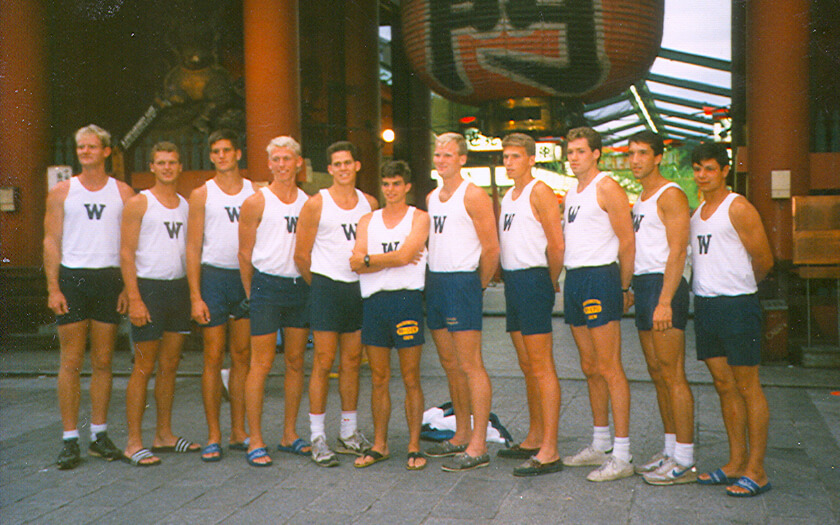Men's Crew:
1980-1989
The 70’s had begun with a stunning upset win at the IRA’s, progressed through uncharted international territory that included victories at Henley, and ended with a team loaded with talent but unable to secure a victory over a resurgent California squad.
The program had come a long way in those ten years under Dick Erickson, but in so many ways found itself back to the heart of the matter: winning the battle on the west coast. By the time 1980 rolled around, all of the national and international success had quickly faded into the background. The focus was back to fundamentals.
But in the ever changing environment around Conibear Shellhouse, there were other changes afoot. With the passage of Title IX in 1972 and the advancement of the women’s crew program, there were issues beginning to creep up about an all male athletic dormitory. In addition, with the economy in a protracted slowdown, funding for non-revenue generating sports – like rowing – was becoming increasingly sparse.
Training methods also continued to change, as did dietary concerns. Optimization of athletic performance was becoming more complicated, the student body itself was dramatically changing, and drugs were finding their way into intercollegiate athletics. As a coach, it was no longer enough to focus on “on field” performance of the college athlete; it now was an around the clock responsibility ranging from academic eligibility to personal responsibility of the student.
Through all of that, Dick Erickson was still able to maintain a perspective on what was most important to the men in his program. The self described “opportunity-ist” was still offering up the opportunity at a breathless pace. And as the seventies – and now the eighties – would bear out, he was not afraid to change himself, or break with tradition, to achieve the goals established by the many that came before him.
